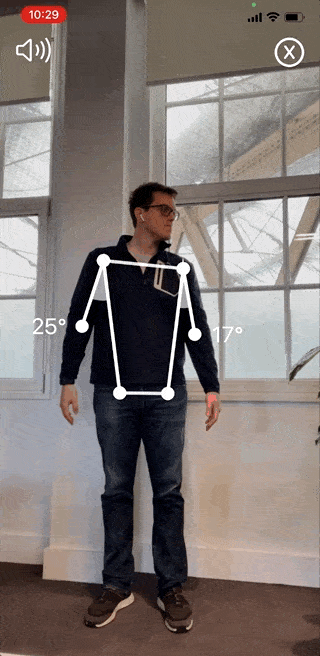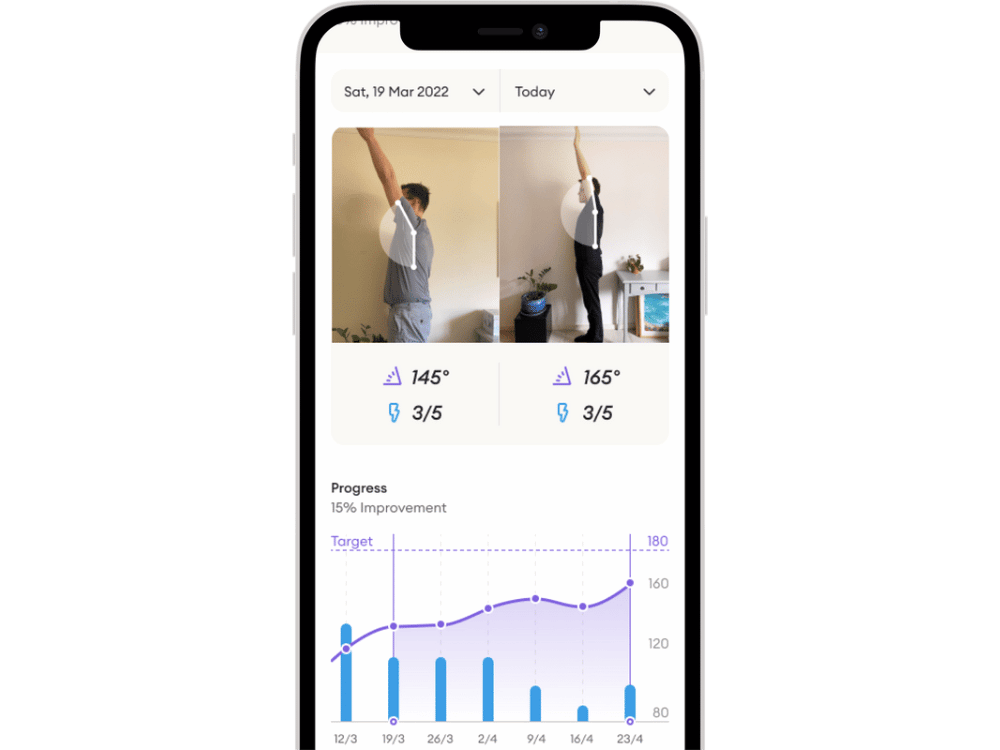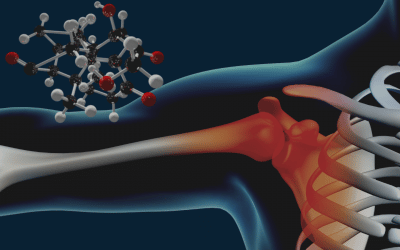What is the difference between Shoulder Separation vs Dislocation?
The shoulder is the most mobile of all joints in the body and is regarded as the ‘most unstable of all major joints’ due to the relatively small articulation surface. The shoulder is a synovial joint that consists of 3 bones; the humerus, scapula, and clavicle. It has 4 connections (a.k.a. articulations or joints) – these are namely (i) the acromioclavicular (AC) joint, where the acromion (the top part of the scapula) meets the collarbone or clavicle; (ii) the glenohumeral (GH) joint, where the humerus joins the glenoid; (iii) the sternoclavicular (SC) joint, where the clavicle meets the sternum; and (iv) the scapulothoracic (ST) articulation where the scapula meets the chest wall.
Both “static and dynamic restraints” are used to achieve shoulder stability. In a ‘normal’ shoulder, the humeral head stays in the centre of the glenoid fossa (a socket formed by a hollow at the superolateral edge of the scapula), which allows joint surfaces to line up perfectly. Unlike the hip, the shoulder socket is shallow and therefore requires specific positioning of the 3 bones to maintain its stability. As long as the scapula is in a good position, this wonderful ‘centring’ phenomenon occurs even when launching a cricket ball or baseball exceeding speeds of 100mph! (see the laws of stability below). The arc of the glenoid is instrumental here by containing the glenohumeral jointThe glenohumeral joint is a ball-and-socket synovial joint and is the most mobile joint in the human More response force.
The Laws of Glenohumeral Stability:
- As long as the net humeral joint reaction force (see figure 1 below) is directed within the effective glenoid arc (footnote 2), the glenohumeral joint will not dislocate (see figures 2 and 3).
- If the glenoid and humeral joint surfaces are parallel and the net humeral joint reaction force is directed within the effective glenoid arc, the humeral head will remain centred in the glenoid fossa.
Is shoulder dislocation the same as a shoulder separation?
No! Commonly confused, but very different in their nature of injury, speed required for treatment, diagnosis and rehab treatment methods used.
What is shoulder dislocation?
A shoulder dislocation is when the humerus is pulled or pushed out of the shoulder socket, or glenohumeral joint. Shoulder dislocations represent 50% of all major joint dislocations, with anterior (forward) dislocation accounting for 97% of all types of shoulder dislocations.
What is shoulder separation?
A shoulder separation when the ligaments of the AC joint (connects collarbone to shoulder blade) are damaged, and the bones on either side can move excessively. There are 6 different types or grades given to a shoulder separation injury, then segmented into 3 main treatment routes.
Shoulder Dislocation Symptoms, Causes, Treatment
Here are the symptoms, causes and treatment of shoulder dislocation
Shoulder Dislocation Symptoms
- Deformity – Your arm appears to be out of place
- Severe shoulder painShoulder pain is any pain felt around in and around the shoulder joint. The shoulder is the most mob More
- Numbness in your arm, neck, hand, or fingers
- Swelling and bruising of your shoulder or upper arm
- Weakness or pain preventing you from moving your arm
- Muscle spasms in your shoulder
Shoulder Dislocation Causes
- A direct force to the shoulder from behind and at the side, often caused by sports injuries
- Falling on your shoulder or an outstretched arm
- Accidents (including traffic incidents).
- Individuals may also put their arm in a position of high risk that predisposes them to a dislocation. In this case, the muscles are “unprepared”, and the force “overwhelms” the muscle causing a dislocation.
Shoulder Dislocation Treatment
- Relocation of the shoulder (if no contraindications) – medically called a ‘closed reduction’. Medication can relieve the pain and relax your shoulder muscles. Once the joint is back in place, the severe pain should end.
- Use a sling (3 days to 3 weeks) – to help reduce pain, and allow muscles to relax and ligaments to heal.
- Physiotherapy to help improve range of motion, shoulder strength and function – to improve quality of life and prevent future dislocations.
Surgery may be required if damage has been caused to the socket, tissues or nerves around the shoulder or if you get repeated dislocations.
Shoulder Separation Symptoms
- Intense pain immediately
- Tenderness of shoulder and collarbone
- Swelling
- Bruising
- Deformity
Shoulder Separation Causes
- A fall onto the shoulder.
- High impact to the shoulder, through sports such as rugby.
Shoulder Separation Treatment
- Type I-II injuries are treated non-operatively with Physiotherapy and advice.
- Type III injuries vary on their management depending upon factors including age, level of sporting ability, time of season, and if the individual doesn’t mind altering their activities.
- Types IV-VI require surgery to restore function, and generally have a high success rate in returning function, when combined with Physiotherapy rehabilitationRehabilitation is the process of helping a person regain strength and function after an injury. This More following surgery.
How to tell the difference between separation and dislocation?
There are multiple was that you can tell the difference between shoulder separation and shoulder dislocation:
- Clinical information – Knowing how the injury occured, and what happened immediately afterwards.
- Visual observation – Bruising, swelling, or obvious dislocation (arm abducted and externally rotated) or deformity/bump seen at the shoulder end of the collarbone.
- Palpation/Touching – Knowing normal joint position can enable a clinician to feel what is where.
- Imaging – X-rays, CTs or MRIs will all show clearly if the humerus is dislocated from the joint space, or indeed if the collarbone is separated from the shoulder blade.
Conclusion
A shoulder separation is when the acromioclavicular ligament detaches partially or fully causing a deformation of the collarbone, due to lack of connectedness. Commonly occurring in impact sports such as rugby.
A shoulder dislocation is when the humeral head leaves the safety of the glenoid fossa a.k.a the shoulder socket and is essentially ‘not in location’. Often caused by high velocity trauma or car accidents.
If you are more of an auditory, and visual learner, then this short video explains the difference between shoulder dislocation and shoulder separation in 2 minutes. If you have any questions at all, then please do reach out and we would love to help answer them.
Reflex Health: the App for Measuring Shoulder Range of Motion and Tracking Pain
Recovering from an injury can be tough. You’re not sure what exercises to do, how often to do them, or whether you’re making progress.
It’s hard to stay motivated when progress is slow. Feeling like you’re not making any headway can be demotivating and lead to giving up on your recovery altogether.
This can lead to never regaining your full Range of Motion Potential.
Over 70% of people never complete their rehab
The Reflex Health App takes the guesswork out of recovering from an injury. With this app, you can accurately measure your shoulder range of motion in minutes from the comfort of your own home.
 You’ll also be able to track your progress over time and see what exercises are working best for you. This way, you’ll stay motivated throughout your recovery journey, even when progress is slow.
You’ll also be able to track your progress over time and see what exercises are working best for you. This way, you’ll stay motivated throughout your recovery journey, even when progress is slow.

Track pain across all shoulder movements. When your pain reduces, that indicates that you’re ready for the next stage of physiotherapy.
 Reflex Health has got some great features like tracking pain with your hand so you don’t have to go back and forth to your phone while measuring different shoulder positions.
Reflex Health has got some great features like tracking pain with your hand so you don’t have to go back and forth to your phone while measuring different shoulder positions.


